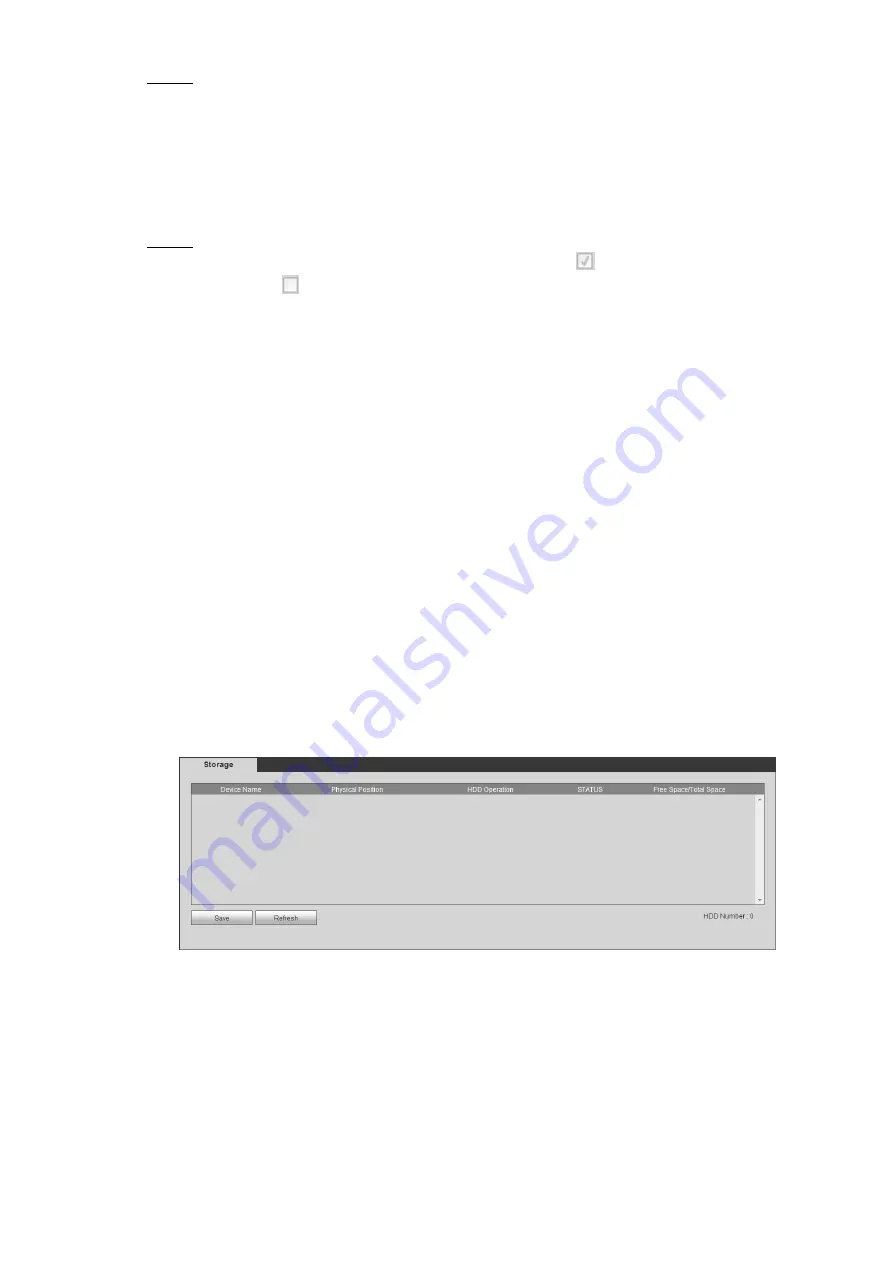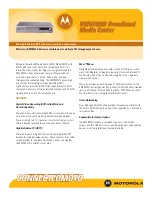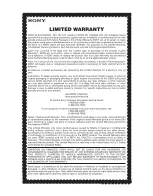
Web
Operations
182
Select alarm output mode.
Step 2
Manual: After the alarm linkage is configured, no matter whether there is an alarm
event occurs, the corresponding alarm output port keeps generating alarm.
Auto: After the alarm linkage is configured, when an alarm event occurs, the
corresponding alarm output port generates alarm.
Stop: After the alarm linkage is configured, no matter whether there is an alarm
event occurs, the corresponding alarm output port never generate alarm.
Click
Save
.
Step 3
Status: Indicates the status of each alarm output port.
Indicates there is an alarm
output, and
indicates there is not.
5.5.4 Managing storage device
Configure HDD storage, package basic information, manage HDD, and review HDD
information.
5.5.4.1 HDD Management
Set up the read/write properties of HDD and review HDD capacity.
Select
Setup > Storage Management > HDD Management
. The
HDD Management
interface
is displayed. See Figure 5-65.
You can set up the HDD as the read/write disk and redundancy HDD on the HDD Operation
column.
Read/Write: Read HDD data and save data to HDD.
Redundancy HDD: If more than two HDDs are connected to the device or SD card, one
HDD can be set to the redundancy HDD for recording backup.
Select the HDD and click
Formatting
to clear all data from the HDD. Proceed with caution.
Storage Device
Figure 5-65
5.5.4.2 Viewing HDD Information
You can view the HDD information, time period of recording files, and Smart information.
Select
INFO > INFO > HDD.
The
HDD
interface is displayed. See Figure 5-66.
Double-click the HDD. The
SMART
interface is displayed. See Figure 5-67. On this
interface, you can find the name, model, serial number, healthy status, and details about
the HDD.
Click the
HDD Time
to view the record information in the HDD.
















































